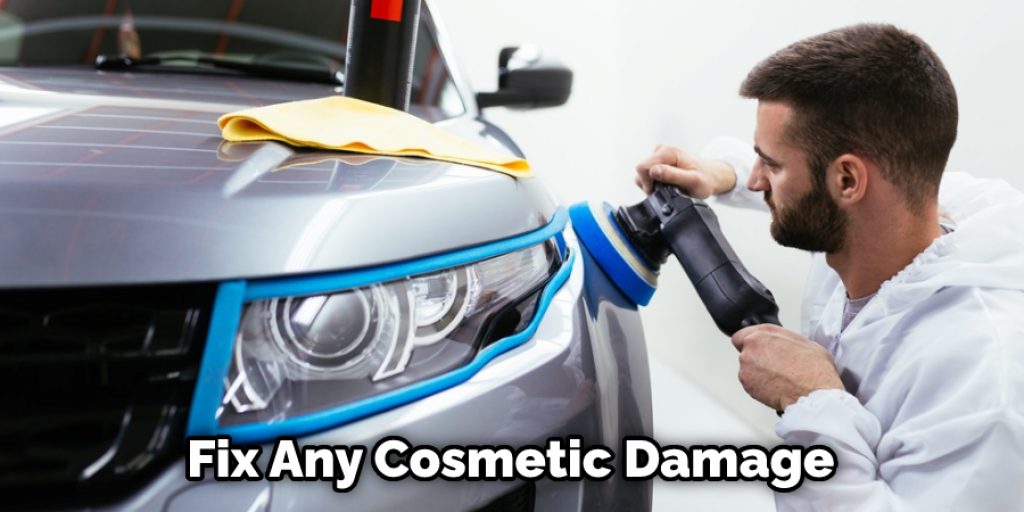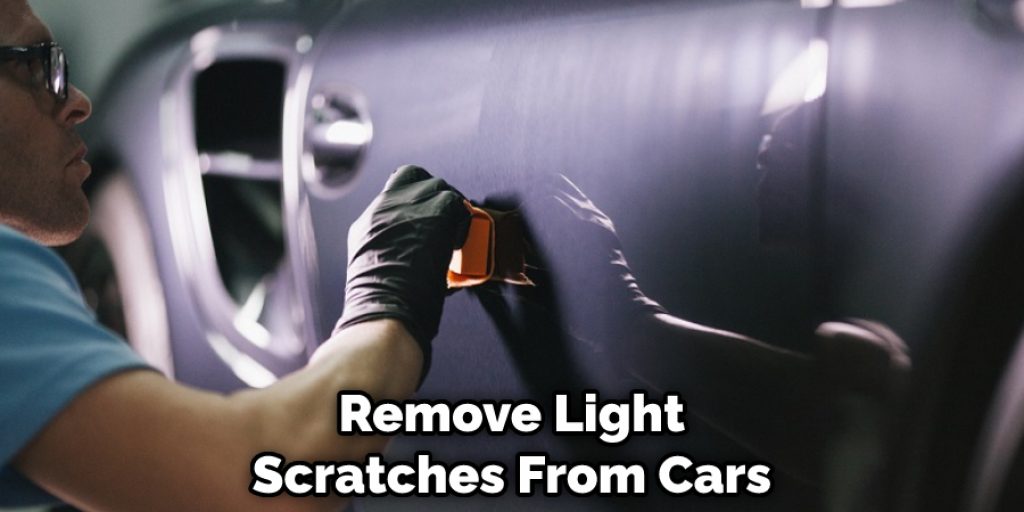If you are like most people, your car is one of your most prized possessions. So when something happens to it, and it gets scratched or dented, it can be pretty frustrating. But don’t worry – there are ways to fix cosmetic damage on cars without spending a lot of money.

In this blog post, we will discuss some of the best methods for repairing scratches and dents on your car. We will also provide tips on how to prevent future damage from happening. So read on for more information about how to fix cosmetic damage on car!
Summary: If you’re experiencing problems with your Contigo Autospout lid, there are a few simple steps you can take to get it back up and running. First, try removing and replacing the lid’s filter. If that doesn’t fix the issue, try cleaning the lid and the inside of the spout with warm water and a dishwashing detergent solution. Finally, if all else fails, you can try taking your Contigo Autospout to a service center.
What Is a Cosmetic Damage to a Car?
Cosmetic damage to a car can be an unsightly blemish that affects the vehicle’s appearance, but doesn’t necessarily impact its function. Often, cosmetic damage is caused by careless driving or parking, and can include scratches, dents, chips, and scuffs. Although cosmetic damage may seem minor, it can still lower the value of a car and make it more difficult to sell.
- In some cases, insurance companies may deem a car a total loss if the repairs required to fix the cosmetic damages would exceed the vehicle’s value. As a result, it is important to be careful when driving and parking your car to avoid unnecessary cosmetic damage.
- If the cost of repairing cosmetic damage to your car exceeds its value, your insurance company may deem it a total loss. So be careful when driving and parking to avoid any unnecessary damage.
- Avoid unnecessary cosmetic damage to your car by being careful when driving and parking, as this can cause your insurance company to deem it a total loss if the repair costs exceed the value of the vehicle.
Why It’s Important to Fix Cosmetic Damage on Car?
Your car is a big investment, so it’s important to take care of it to ensure it lasts for years to come. One way to do this is to fix cosmetic damage as soon as it occurs. While a small dent or scratch might not seem like a big deal, it can quickly lead to more serious problems.
For instance, a dent in the body of your car can slowly start to rust, and a crack in the windshield can weaken the glass and make it more susceptible to breaking. By taking care of these minor issues right away, you can save yourself time and money in the long run.
In addition, keeping your car looking its best will help you retain its value should you ever decide to sell it. So if you want to protect your investment and keep your car looking great, be sure to fix any cosmetic damage as soon as possible.
Schedule Your Car Detailing Appointment Today Whether your car needs a basic cleaning or full-fledged detailing, our team of certified technicians can handle the job quickly and efficiently. Our detailing services are based on the same principles as our auto body work, meaning we pay close attention to detail and strive for perfection with every job.

How to Fix Cosmetic Damage on Car Step by Step Guide
Step 1: Gather Necessary Tools and Materials
Before starting the repair process, gather all the necessary tools and materials, including:
- Automotive soap and water
- Microfiber cloth or sponge
- Clean, lint-free cloths or rags
- Automotive rubbing compound
- Automotive polishing compound
- Car wax
- Paint touch-up kit (including color-matched paint, primer, and clear coat)
- Wet and dry sandpaper (600, 1000, 1500, and 2000 grit)
- Painter’s tape
- Spray bottle with water
- Gloves
- Safety glasses
- Optional: Hairdryer or heat gun
Step 2: Assess the Cosmetic Damage
Visually inspect the damaged area and determine the type of cosmetic damage. Common types of cosmetic damage include scratches, scuffs, chips, dents, and minor paint damage.
Step 3: Clean the Damaged Area
Wash the damaged area with automotive soap and water, using a microfiber cloth or sponge to remove any dirt or debris. Rinse thoroughly and dry with a clean, lint-free cloth.
Step 4: Repair Minor Scratches and Scuffs
For minor scratches and scuffs, apply a small amount of automotive rubbing compound to a clean, lint-free cloth. Rub the compound into the scratch or scuff using a circular motion, applying moderate pressure. Continue rubbing until the scratch or scuff is no longer visible. Wipe away any excess compound with a clean cloth.
Step 5: Polish the Repaired Area
Apply a small amount of automotive polishing compound to a clean, lint-free cloth. Buff the repaired area using circular motions, blending the edges of the repair into the surrounding paint. Continue polishing until the area has a uniform appearance and gloss.
Step 6: Apply Wax to the Repaired Area
After polishing, apply a thin layer of car wax to the repaired area to protect the paint and restore the original shine. Buff the wax with a clean cloth until the desired gloss is achieved.
Step 7: Repair Paint Chips
For paint chips, use a paint touch-up kit that includes color-matched paint, primer, and clear coat. Follow the kit’s instructions for applying the primer, paint, and clear coat to the chipped area, allowing each layer to dry fully before applying the next.
Step 8: Wet Sand the Repaired Area
Once the clear coat has dried, wet sand the repaired area to blend the new paint with the surrounding paint. Start with 600-grit sandpaper, dipping it in water and lightly sanding the repaired area. Gradually increase the sandpaper grit to 2000, keeping the sandpaper wet and periodically wiping away residue with a clean cloth. Be cautious not to sand through the new paint layers.
Step 9: Polish and Wax the Repaired Area
After wet sanding, polish the repaired area using automotive polishing compound, following the same process outlined in Step 5. Once the area is polished, apply a thin layer of car wax to protect the paint and restore the shine.
Step 10: Repair Minor Dents
For minor dents, use a hairdryer or heat gun to heat the dented area. Then, use a vacuum suction cup or plunger to carefully pull the dent out. Alternatively, you can use a paintless dent removal kit, following the manufacturer’s instructions.
Step 11: Protect the Surrounding Area
When working on larger or more complex cosmetic damage, use painter’s tape to protect the surrounding areas of your car. This will help prevent accidental damage to the undamaged portions of your vehicle during the repair process.
Step 12: Follow Safety Precautions
Always wear gloves and safety glasses when working with chemicals or tools to repair cosmetic damage. Additionally, work in a well-ventilated area to reduce the risk of inhaling harmful fumes from paint or other chemicals.
Step 13: Seek Professional Assistance for Major Damage
If the cosmetic damage is extensive or complex, consider seeking professional assistance from a reputable auto body shop. They have the necessary tools, materials, and expertise to properly repair cosmetic damage and restore your car’s appearance.
Step 14: Consider Paintless Dent Repair (PDR) for Certain Dents
For dents that have not damaged the paint, consider using paintless dent repair (PDR) techniques. PDR is a specialized process that involves using specialized tools to massage the dented area from the inside out, restoring the metal to its original shape without damaging the paint.
Step 15: Maintain Your Car’s Appearance
To prevent future cosmetic damage, regularly wash and wax your car to protect the paint and clear coat. Park in covered areas when possible to protect your car from weather-related damage, and avoid parking close to other vehicles or objects that could cause scratches or dents.
Step 16: Address Cosmetic Damage Promptly
If you notice cosmetic damage on your car, address it as soon as possible. Promptly repairing minor damage can help prevent more extensive or costly repairs in the future.
Step 17: Educate Yourself on Proper Repair Techniques
Stay informed about best practices for repairing cosmetic damage, including proper cleaning, sanding, and polishing techniques. The more knowledge you have, the better equipped you will be to address any cosmetic damage that occurs.
Step 18: Invest in a Comprehensive Car Care Kit
Purchase a comprehensive car care kit that includes all the necessary tools and materials for repairing and maintaining your car’s appearance. This can help ensure that you have everything you need on hand when cosmetic damage occurs.
Step 19: Regularly Inspect Your Car for Cosmetic Damage
Regularly inspect your car for signs of cosmetic damage, such as scratches, dents, or chips. Identifying and addressing damage early can help you maintain your car’s appearance and prevent more serious issues from developing.
Step 20: Share Your Knowledge with Others
Share your knowledge and experience with other car owners who may be dealing with cosmetic damage. Providing advice and guidance can help others more effectively address cosmetic damage and maintain their cars’ appearance.
By following these steps and prioritizing proper car care, you can successfully repair cosmetic damage and maintain your car’s appearance. Regularly inspecting and addressing minor damage can help prevent more extensive or costly repairs in the future. If you are unsure about any aspect of the repair process or need assistance, consult a professional auto body technician or shop for guidance.
Frequently Asked Question
What Is a Cosmetic Repair?
A cosmetic repair is a fix for something that is not broken. It is usually used to fix the appearance of an object rather than the function. In the case of a car, this could mean repairing scratches, dents, or other damage that does not affect how the car runs.
Is a Crack Cosmetic Damage?
If the crack is less than a quarter inch long, it is usually not considered damage. It can usually be fixed with a touch-up paint pen if it is on the car’s body. If it is on the car’s windshield, you will need to take it to a professional to have it repaired.
What Is Minor Cosmetic Damage?
Minor cosmetic damage is any damage that does not affect functionality or safety. This can include scratches, dents, and chips in the paint.
Can Wd 40 Remove Scratches on Car?
There is no definitive answer as every scratch and car is different. However, WD-40 is a lubricant that can often help remove light scratches from cars. Spray the WD-40 onto a cloth and then rub the cloth over the scratches.

Conclusion
If you have cosmetic damage on your car and don’t know how to fix it, don’t worry. You can always take it to a professional or use one of the many available DIY repair kits. However, if you’re looking for a more affordable option, consider using a touch-up paint pen.
These pens are easy to use and come in a variety of colors. They also work well on small areas that need attention. So, if you’re looking for an easy way to fix cosmetic damage on your car, consider using a touch-up paint pen. Thanks for reading our post about how to fix cosmetic damage on car.
You May Also Read: How to Repair Small Tear in Car Headliner
You can check it out to Fix a Hanging Bumper
